Elektor Lab Notes 27: Time-of-Flight Sensors, LoRaWAN, Matter, and More
on
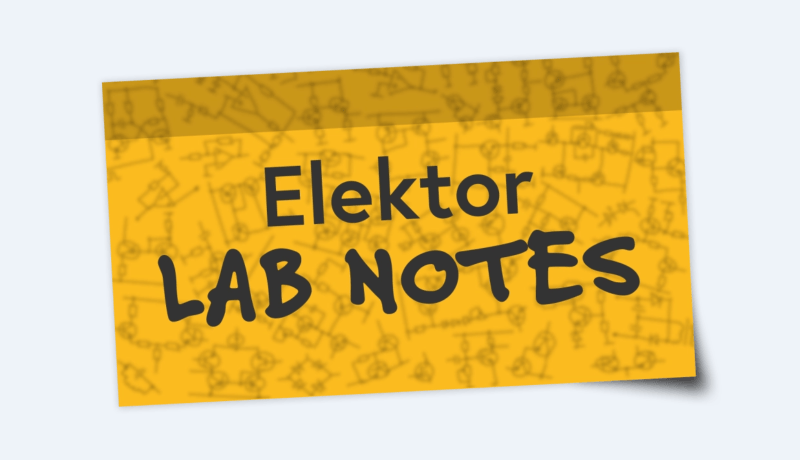
Welcome back to Elektor Lab Notes! Every few weeks, our engineers and busy editors at Elektor post a few lab notes and updates about new DIY electronics projects, tech industry news, and helpful engineering tips. In this edition of Lab Notes, we talk about time of flight sensors, cable testing, LoRaWAN, Matter, and more. Please share your thoughts in the Discussion section at the bottom of this page. Feel free to post your own lab notes and let us know what you are working on at your electronics workbench!
Jean-François Simon (Engineer, Elektor)
Blending Old and New Tech Together: Our most dedicated readers may recall that last year, in Lab Notes #17 (time flies...), I mentioned analog function generators like the XR2206 and ICL8038. These were widely used for several decades, and Elektor was no exception: several circuits were published based on them. I recently discovered time-of-flight sensors, especially those in the VL53L series from STMicroelectronics, and I began to wonder: would it be possible to use one of these modern digital sensors and interface it with one of those old analog circuits, controlled by voltage or current? The idea of building a modern, gesture-controlled sound generator (a sort of pseudo-Theremin) took shape quickly.

Of course, it would make much more sense to do this fully on a microcontroller without any analog circuitry. But that wouldn't be as much fun! Instead, I used the Arduino strictly as an I²C-to-analog converter, passing control to a venerable XR2206 function generator for sound synthesis. It’s a mix of old and new, just for the fun of tinkering! Getting the sensors to behave is the first step. I used the Arduino library provided by STM32duino on Github and built from there. As I’m using two VL53L4CD sensors (one for pitch control, the other one for volume control), it’s needed to initialize them separately to give them unique I²C addresses, after which they can share the same SCL and SDA lines without problems.
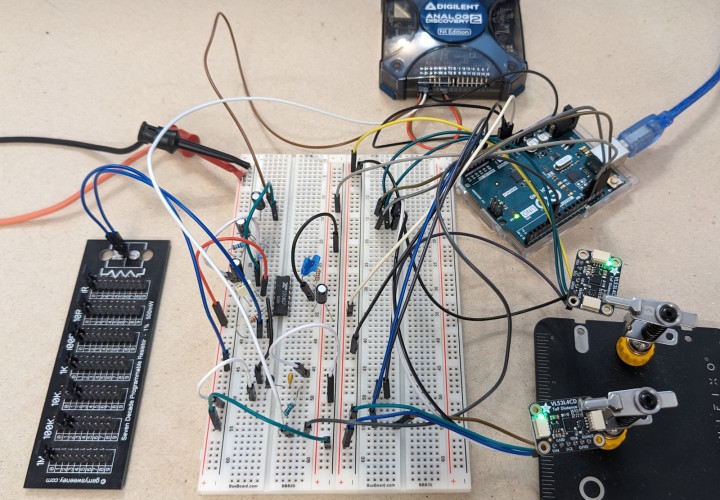
For now, the circuit is still on a breadboard, but there’s still a lot to refine. The current setup does produce sound (more often weird noises rather than music) but there's room for improvement in terms of control range and playability. I’ve been playing around with how the PWM from the Arduino is filtered before reaching the transistors controlling the XR2206, and more. You’ll find the whole story in the upcoming Circuit Special issue this August, with schematics and code! In the meantime, let me know if you have any ideas or suggestions in the comments below.
USB Cable Testing: Recently, I came across a strange USB-A to USB-C cable. I tried to use it to transfer data between my phone and my PC, without any success. Could it be one of those devilish charge-only cables with no data lines inside? A quick test with the first development board I had on hand with a USB-C port (in this case, an NXP FRDM board) made me raise an eyebrow. The board worked just fine, and the USB-to-UART converter was correctly detected by Windows. So the D+, D–, 5 V, and GND lines must all be present. The cable is very short and labeled “6A,” which suggests it's primarily intended for charging. And yet, I couldn’t get it to charge my phone at all! Neither with a charger nor via the PC. The mystery deepens.
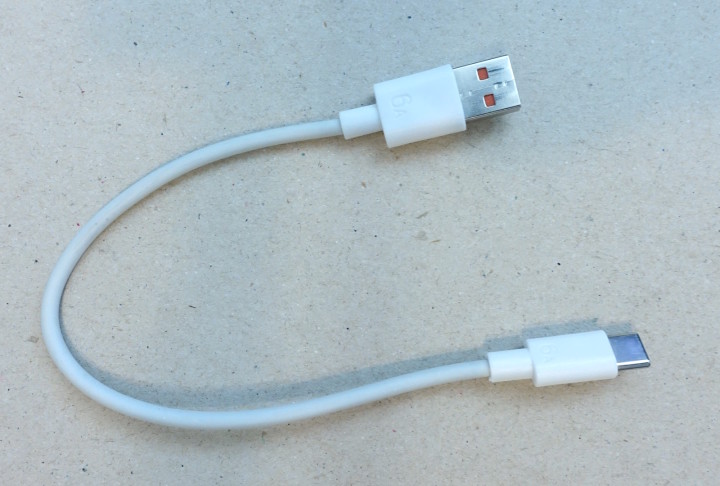
The most reasonable thing would have been to give up and toss the cable in the trash. But that’s not my style. Instead, I bought a USB cable tester on Aliexpress, that checks continuity on all conductors, with support for most connector combinations. Since the connectors are on opposite sides of the PCB, a short USB-A male to USB-A female extension is needed to test extra-short cables like this one. I compared the short cable in question with another, longer one that works perfectly:
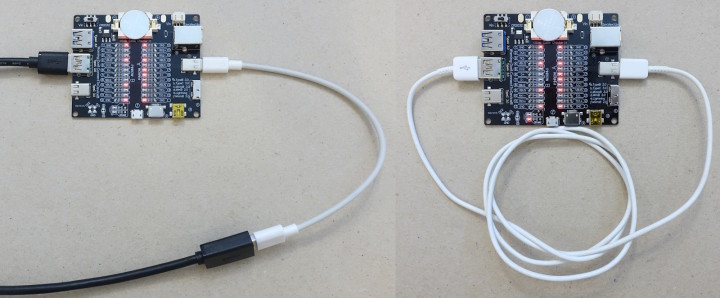
In both cases, the required conductors for USB 2.0 (D+, D–, 5 V, and GND) are present, as expected. The “problem” is that on the extra-short cable, the shield is not connected on the USB-C side. I could have figured this out with a simple multimeter from the beginning! If only I had known it might be relevant, of course. I’m surprised that my phone refuses to charge or connect to the PC just because the USB-C connector’s shield is unconnected. Is this behavior defined in a standard somewhere? Or is my Pixel 5 just being picky? Let me know in the comments if you have documentation on this. In any case, at least now I own a nice cable tester, which will definitely come in handy for checking any suspicious cables I come across.
Saad Imtiaz (Senior Engineer, Elektor)
LoRaWAN Sensor Node – All-in-One Upgrade: I’ve been working on the next version of the LoRaWAN sensor node, and this time, it’s getting a major upgrade. The new design consolidates everything onto a single PCB—including the ESP32-S3, LoRa module, GPS, solar charging circuit, and USB charging support for the onboard battery. This compact all-in-one solution not only reduces wiring clutter but also enhances power efficiency and simplifies deployment in field applications.
One of the standout features in this version is the inclusion of Toshiba’s TCK126BG—a 0.08 nA ultra-low quiescent current, 1.0 A load switch IC in an ultra-small package. It’s perfect for precise power control of individual modules. Additionally, I’ve added the MAX31334 Ultra-Low-Power RTC with Integrated Power Switch, which will control the power to the ESP32-S3. This setup allows the system’s deep sleep power consumption to drop from \~8 µA down to as low as 70 nA, making it ideal for ultra-low-power remote sensor applications.
Smart Matter Device – All-in-One Room Controller: Another exciting project on my desk is a Matter-enabled smart room controller, designed to plug directly into your room’s switch panel or connect to devices like an AC or heater. This powerful little unit packs a ton of features:
- Human presence detection
- Environmental sensing using Bosch’s AI-enabled sensor
- Three relays capable of switching AC loads over 5A
- IR transmitter and receiver to control traditional remote-operated devices
- Power consumption monitoring for all connected AC loads
At the heart of the project is the Beetle ESP32-C6, bringing Matter protocol compatibility along with Wi-Fi and Thread support. It’s designed to work with modern smart home platforms like Home Assistant, Google Home, and Apple Home.
This project is proudly sponsored and manufactured by NEXTPCB, who not only handled the PCB production and assembly but also provided excellent engineering support throughout the process. From clarifying design details to regular status updates, the experience was smooth and highly professional. The project is currently in the testing phase, and I’ll be sharing a full breakdown on the Elektor Labs Platform very soon. But as always—here’s your sneak peek!
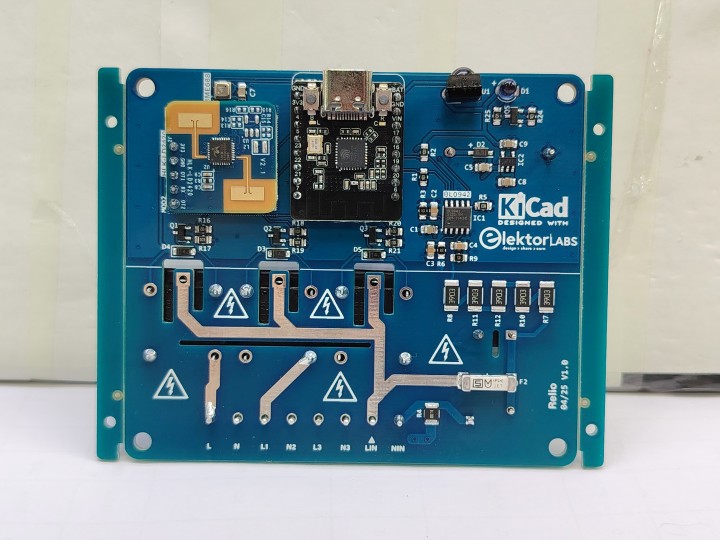



Discussion (0 comments)